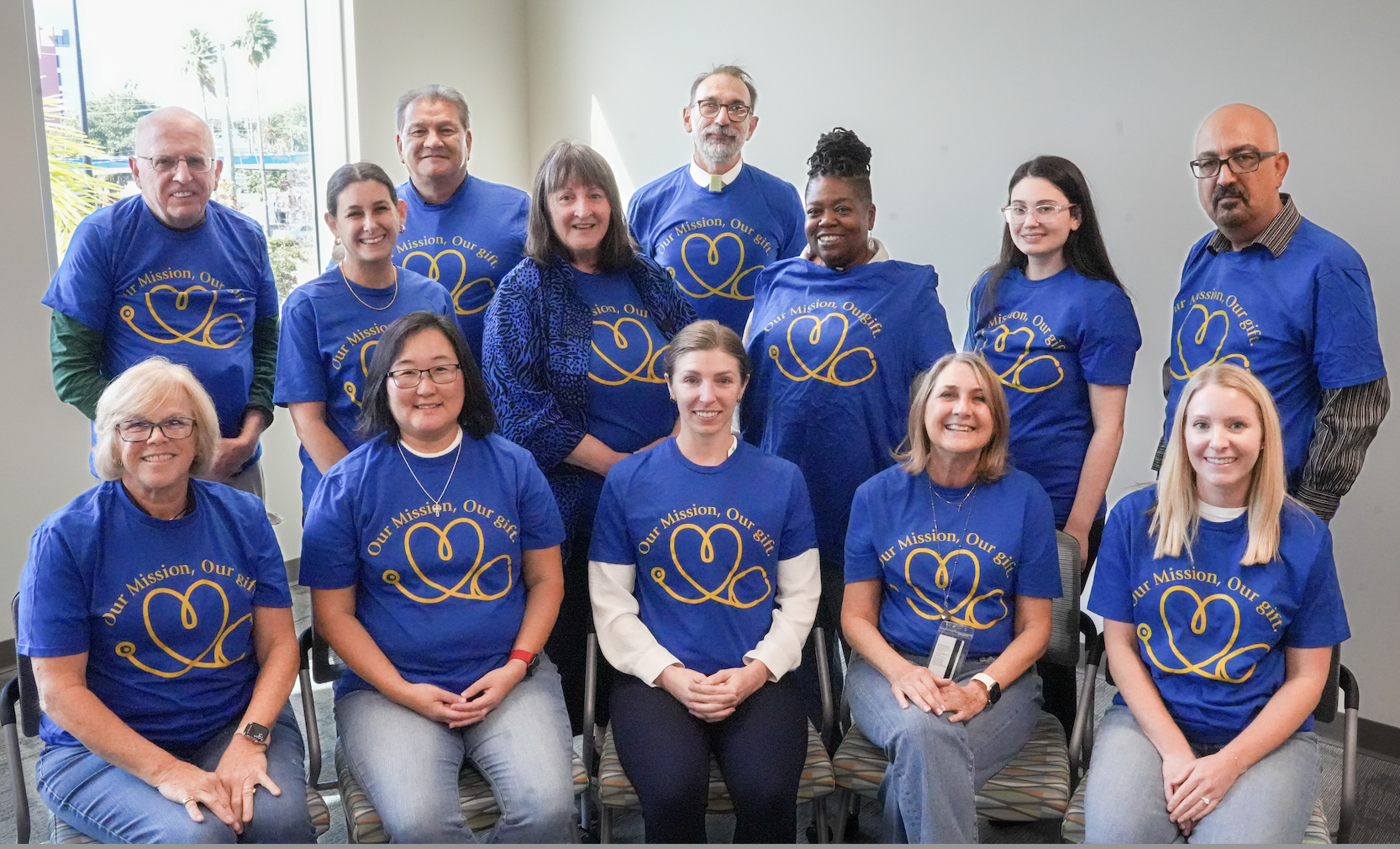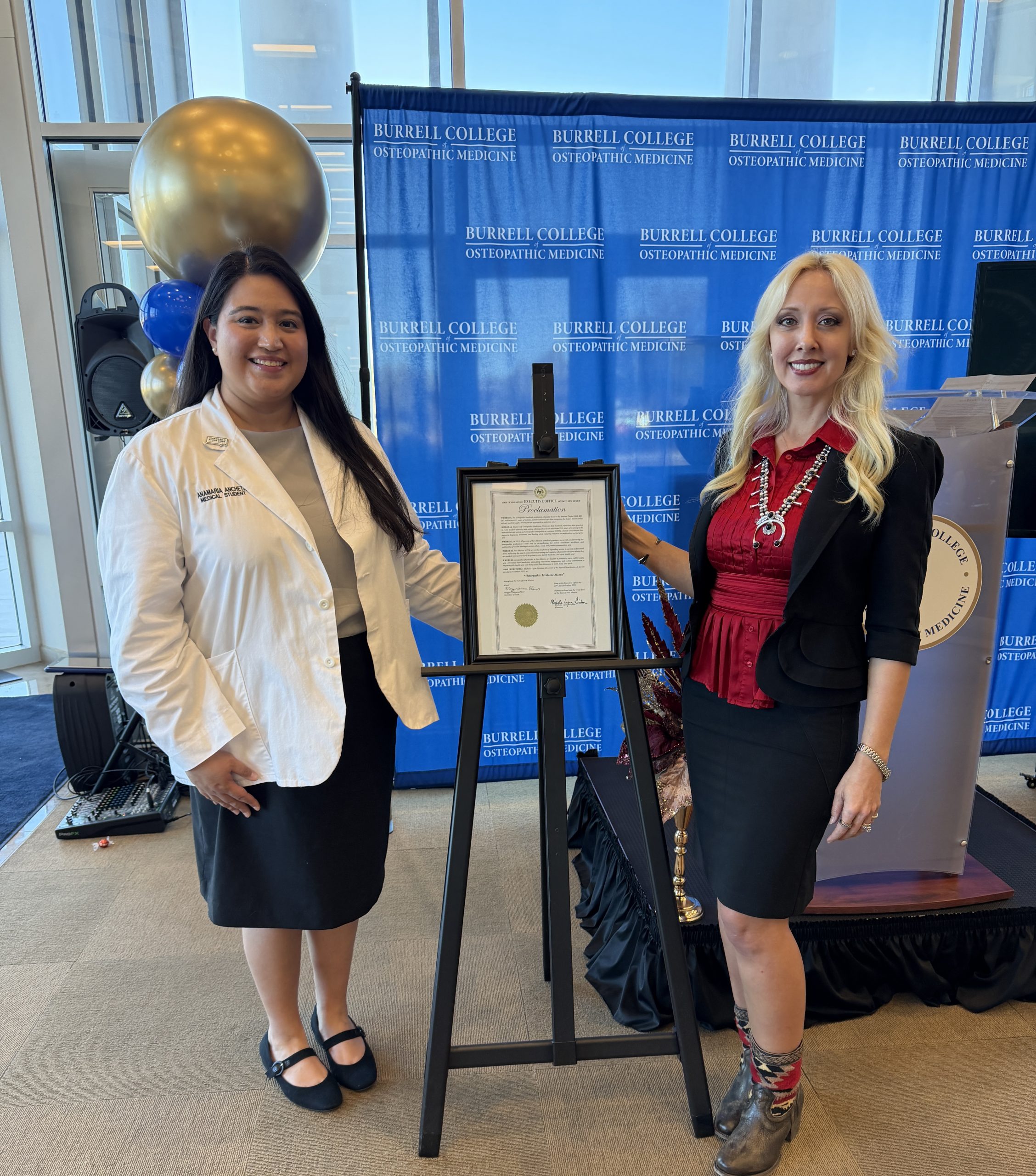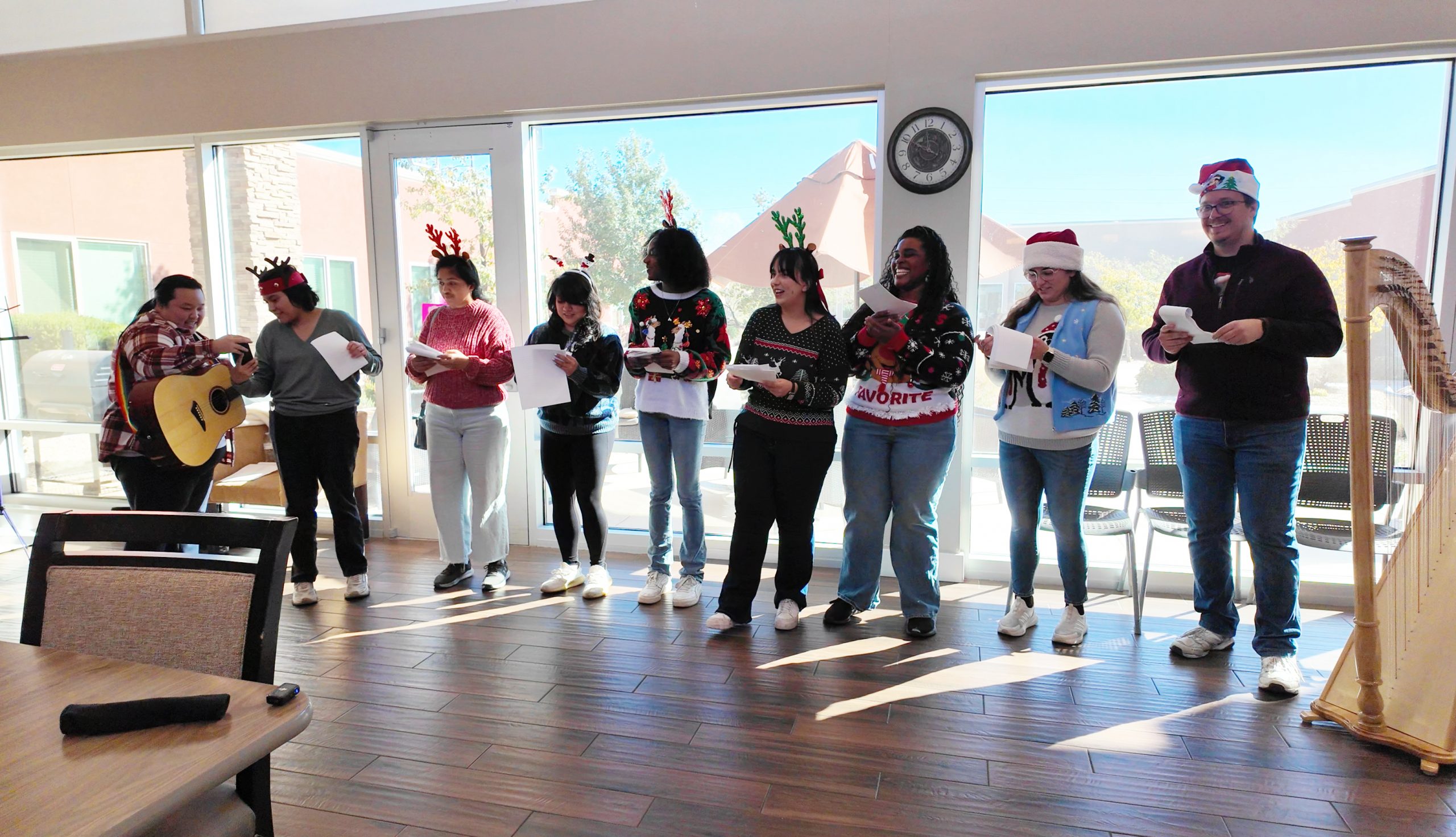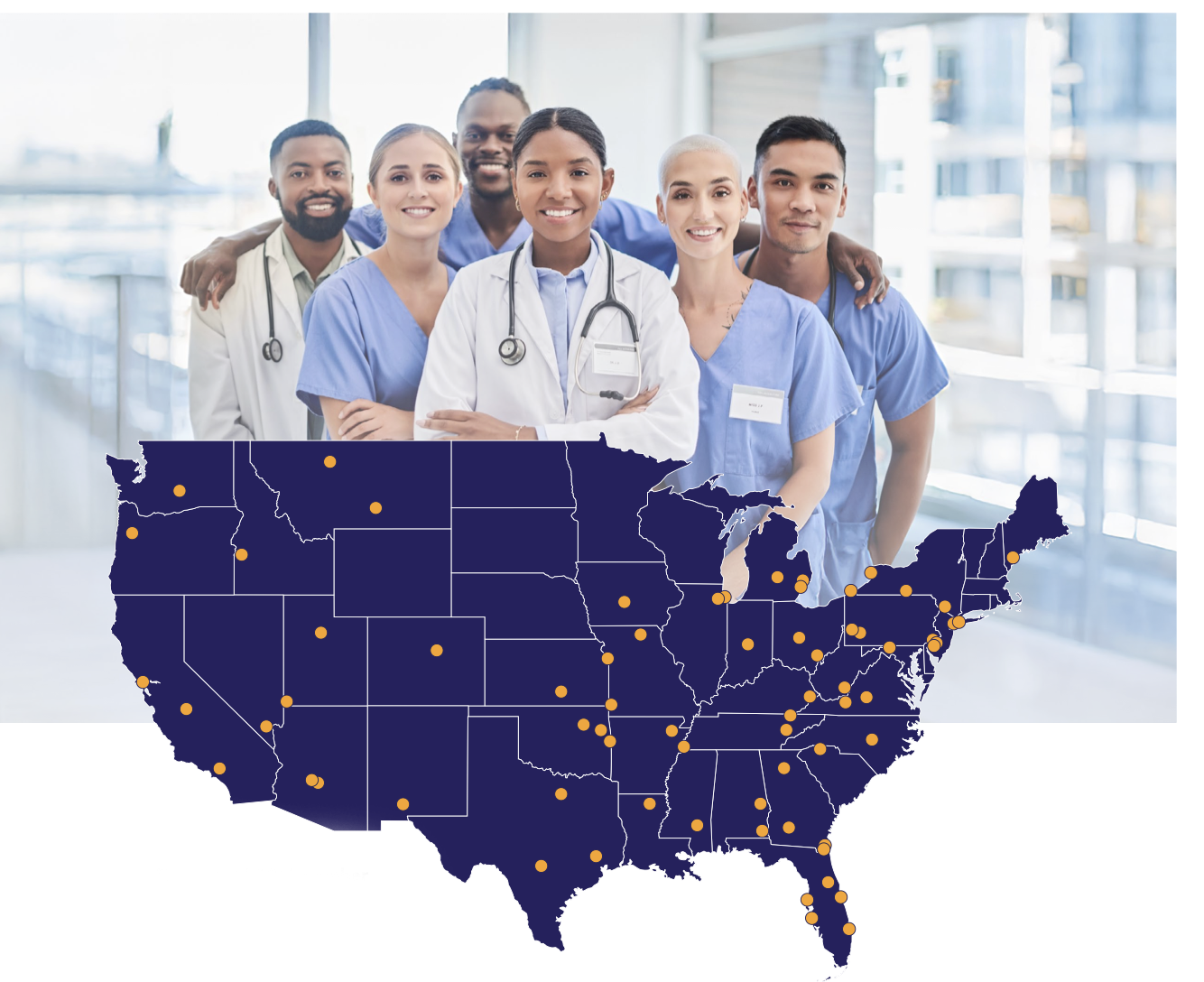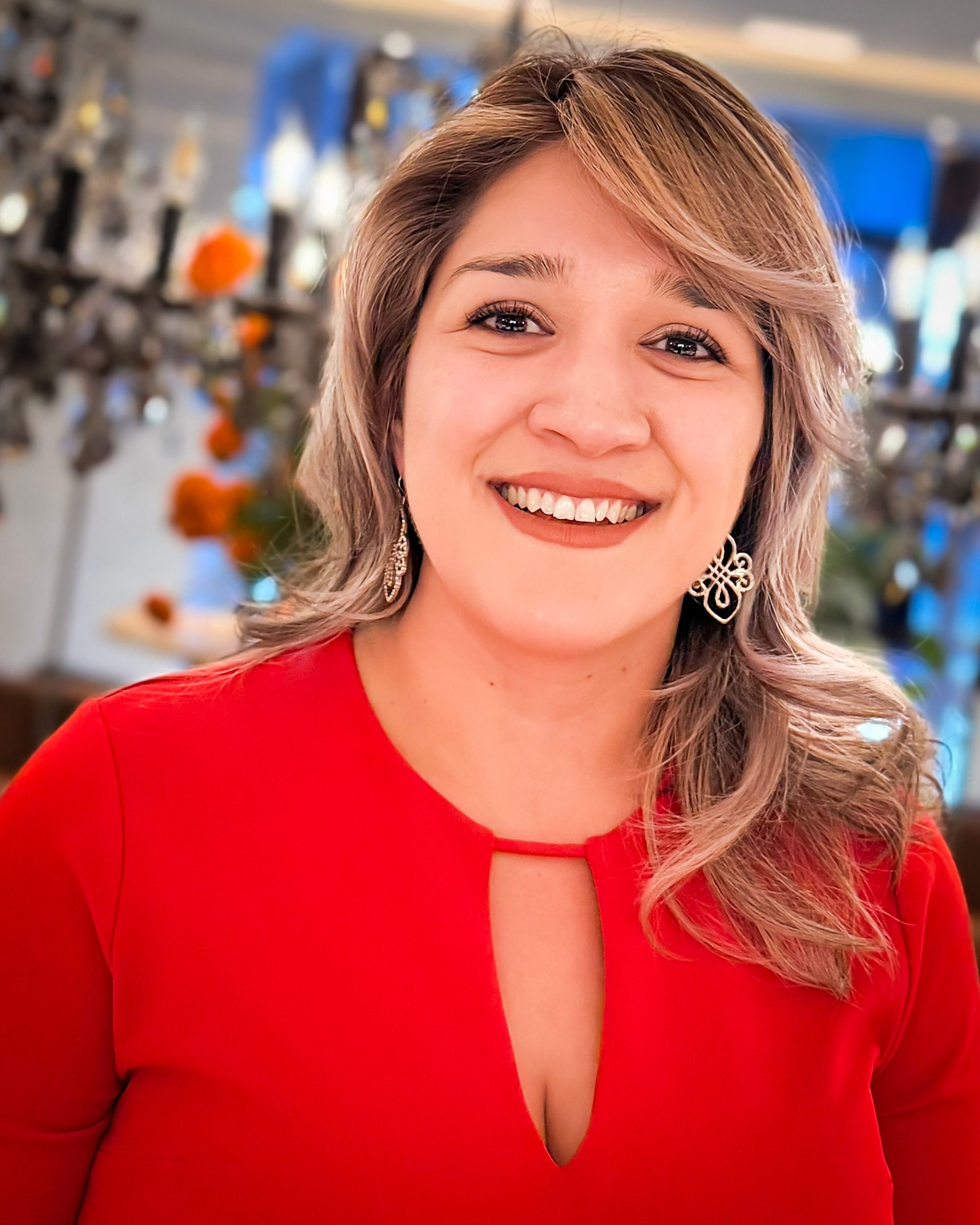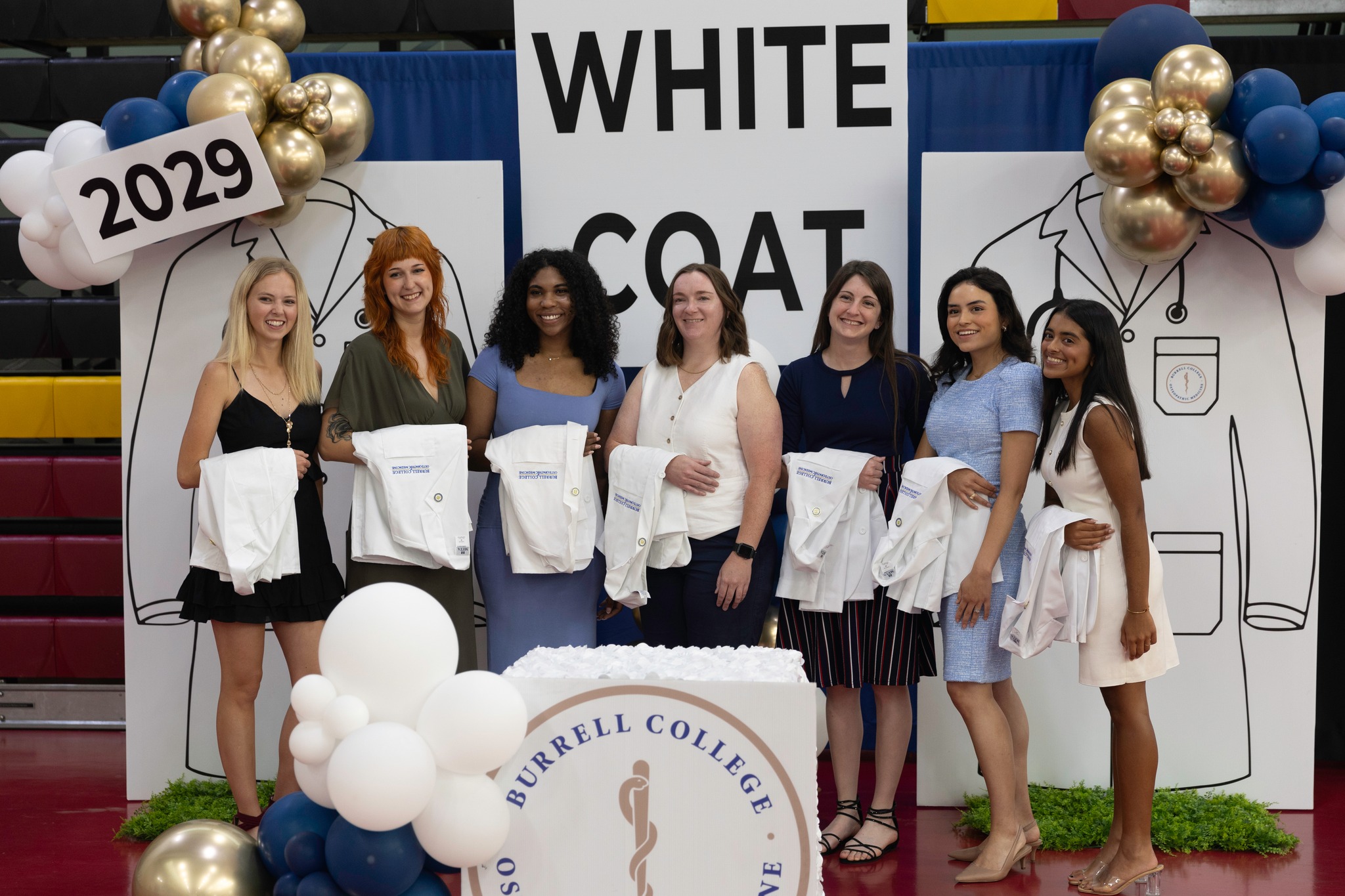
Nineteen medical students from the Burrell College of Osteopathic Medicine helped out at the Las Cruces Cleft Palate Clinic held in early November at the MECA Therapies Early Intervention Services building. This clinic is held twice per year in Las Cruces, during which cleft lip/palate and craniofacial patients and their families come in from all over southern New Mexico and far west Texas to see an array of medical specialists.
“Orofacial clefts are the second most common birth defect in the United States, and New Mexico has a higher rate than most places,” explains BCOM Anatomy and Cell Biology Professor Nancy Minugh-Purvis, Ph.D. “A child born with a cleft not only needs a surgical repair, but there are nursing, dental, speech, and other problems as well. There are orthodontic problems over and above the dental problems. Patients often have hearing problems, so they need to be examined by an audiologist. They see a pediatrician because there are associated syndromes that include cardiac problems and other issues that can affect their overall health. They also see social workers because there are often issues with needing special support in school or just being connected to resources to help the family. At the clinic, they rotate through all these specialists in one day so they can get updates on all the things these kids need.”
Dr. Minugh-Purvis spent 31 years serving as the growth specialist for the Cleft Palate and Craniofacial Teams at the Children’s Hospital of Philadelphia. She has done extensive research on the subject and has had her work published. When she moved to Las Cruces, she got involved with the work being done by Albuquerque-based plastic surgeon Luis Cuadros, MD, and his team at the New Mexico Cleft Palate Center. Instead of having families travel from all over the state to Albuquerque, Dr. Cuadros takes the clinics to the families, holding them in rural areas like Gallup and Farmington and other locations far from Albuquerque, such as Las Cruces.
Second year BCOM medical student David Nguyen participated in the clinic for the second time this year. He said, “This experience provided me the opportunity to see the humanistic approach in treating patients put into action. The speech therapists and social workers do work that can be just as important as the surgeons and the doctor in satisfying every aspects of the patient’s life. It’s not just fixing the physical anomalies that they have; it’s also about making sure that they are getting the support they need during this transformative part of their life.”
At the recent clinic, the BCOM medical student volunteers were assigned to a family for the day and escorted them through their visits with each specialist. Third year medical student Emily Hanka is interested in pediatrics and wanted to see how the various specialties work together for a common goal. She noted how, in addition to the medical issues, the providers helped families deal with cultural stigmas surrounding clefts, and helped mothers realize that they hadn’t done anything to cause the defect. Hanka was assigned to work with a mother who had twins in utero, one with a cleft palate. She said, “Seeing how they handled her with early intervention was really powerful. For her to have all that education before that child was even born made a big impact for her.”
Nguyen was excited to follow up with the patients he’d met last year. “Seeing where they are now is by far the most dramatic and most memorable part of the experience. It’s humbling to see Dr. Cuadros, Dr. Yates, and all the other healthcare providers collaborate in this multidisciplinary team to help patients with craniofacial anomalies achieve a higher quality of life.”
Dr. Minugh-Purvis said the goal is to get families to attend one clinic a year. In Las Cruces, one group of families attend the fall clinic and another group attends the spring clinic. Patients range from unborn and newborn babies to toddlers and those graduating high school. After the visits, the specialists all gather for follow up discussions. “Maybe one person heard something someone else didn’t, but it’s still relevant to what they saw. It really helps prevent important details from falling through the cracks,” Dr. Minugh-Purvis explained. Hanka described the follow up experience as being very insightful for a physician-in-training hoping to see how a team makes planning decisions and moves forward.
Dr. Minugh-Purvis said that this clinic is a great opportunity for medical students to understand the complexity of cleft patient care and to highlight the important role primary care physicians play in the treatment plan. “These students are so busy already, so it’s wonderful of them to donate their time,” she said. “They did an amazing job and I know the families were very appreciative to have them there for support.”

